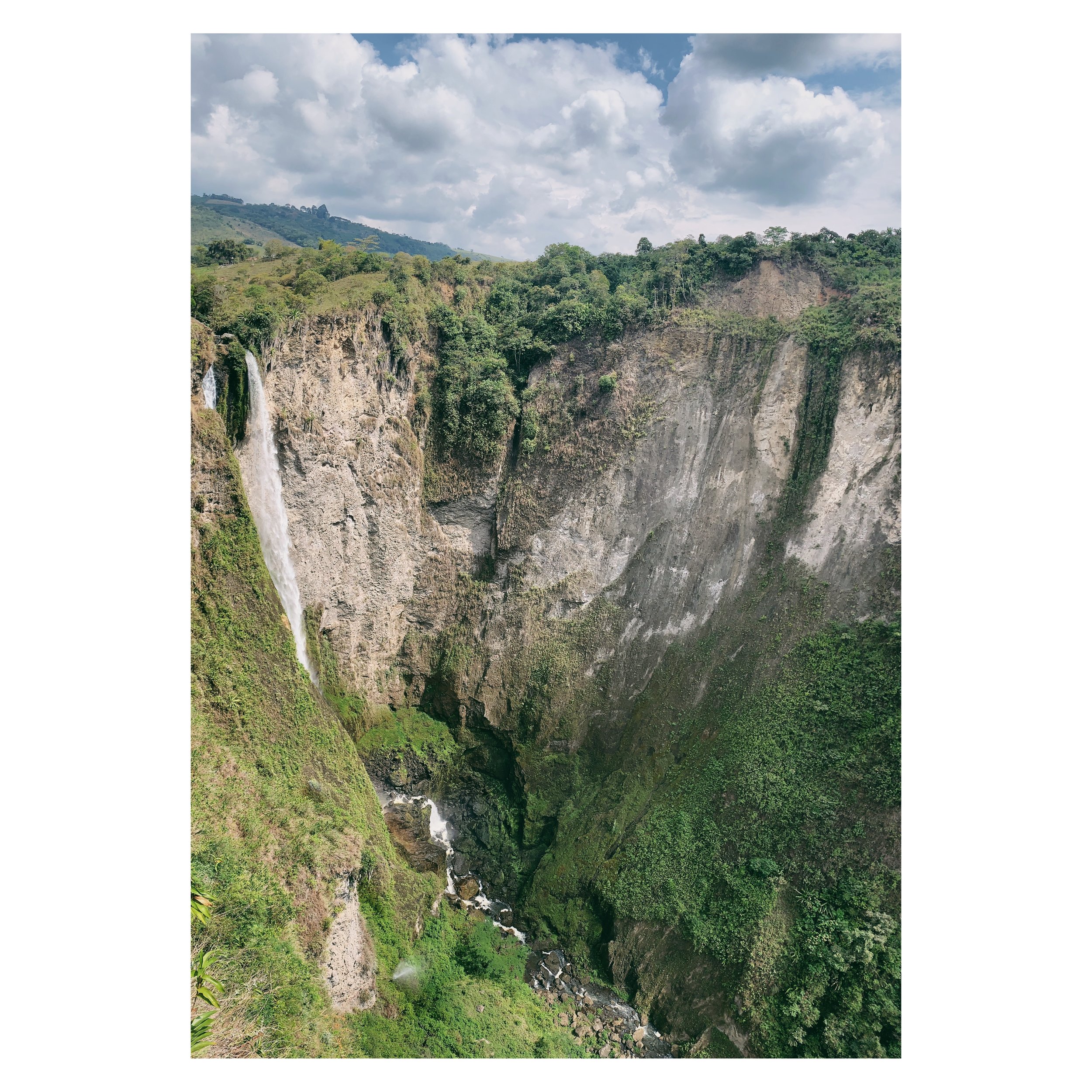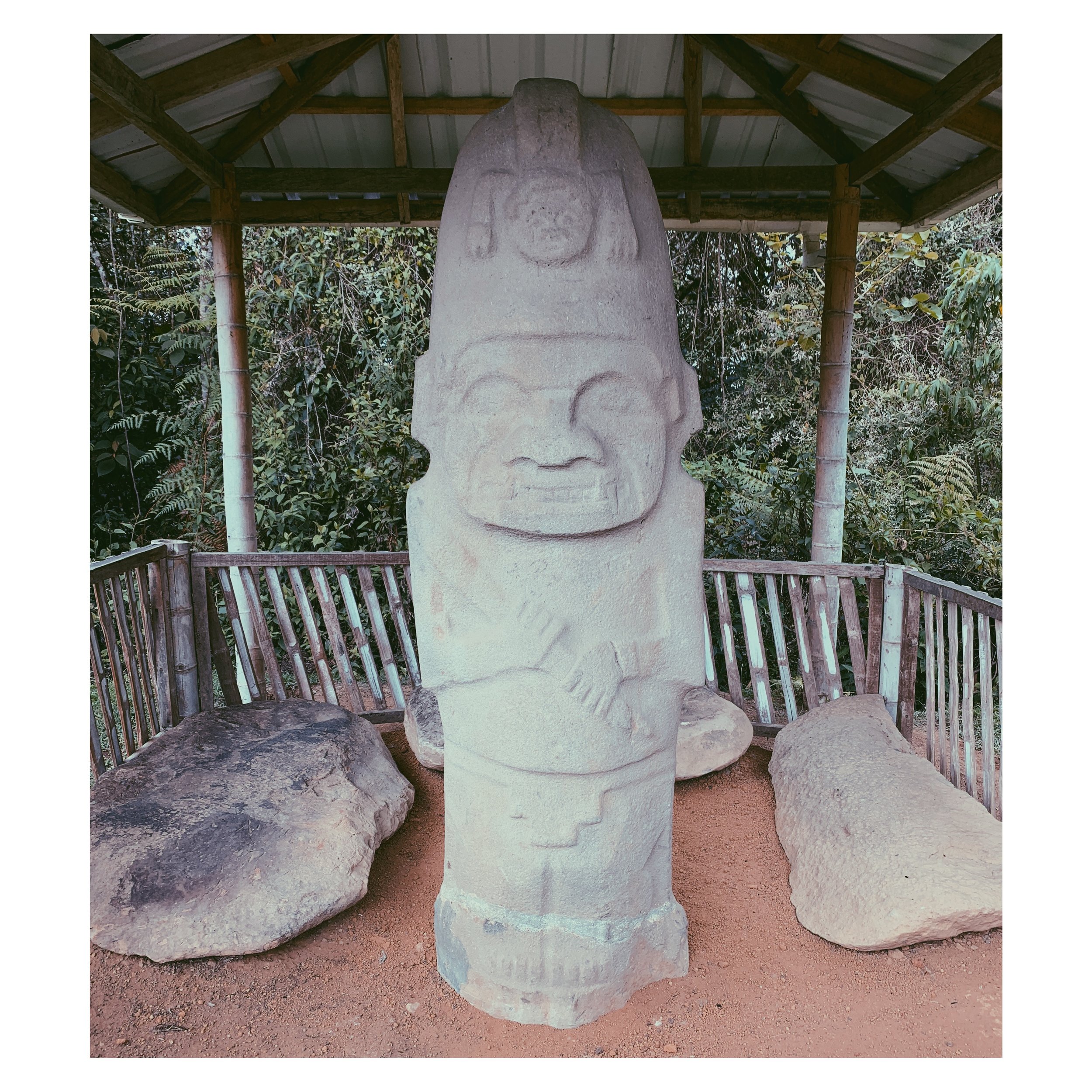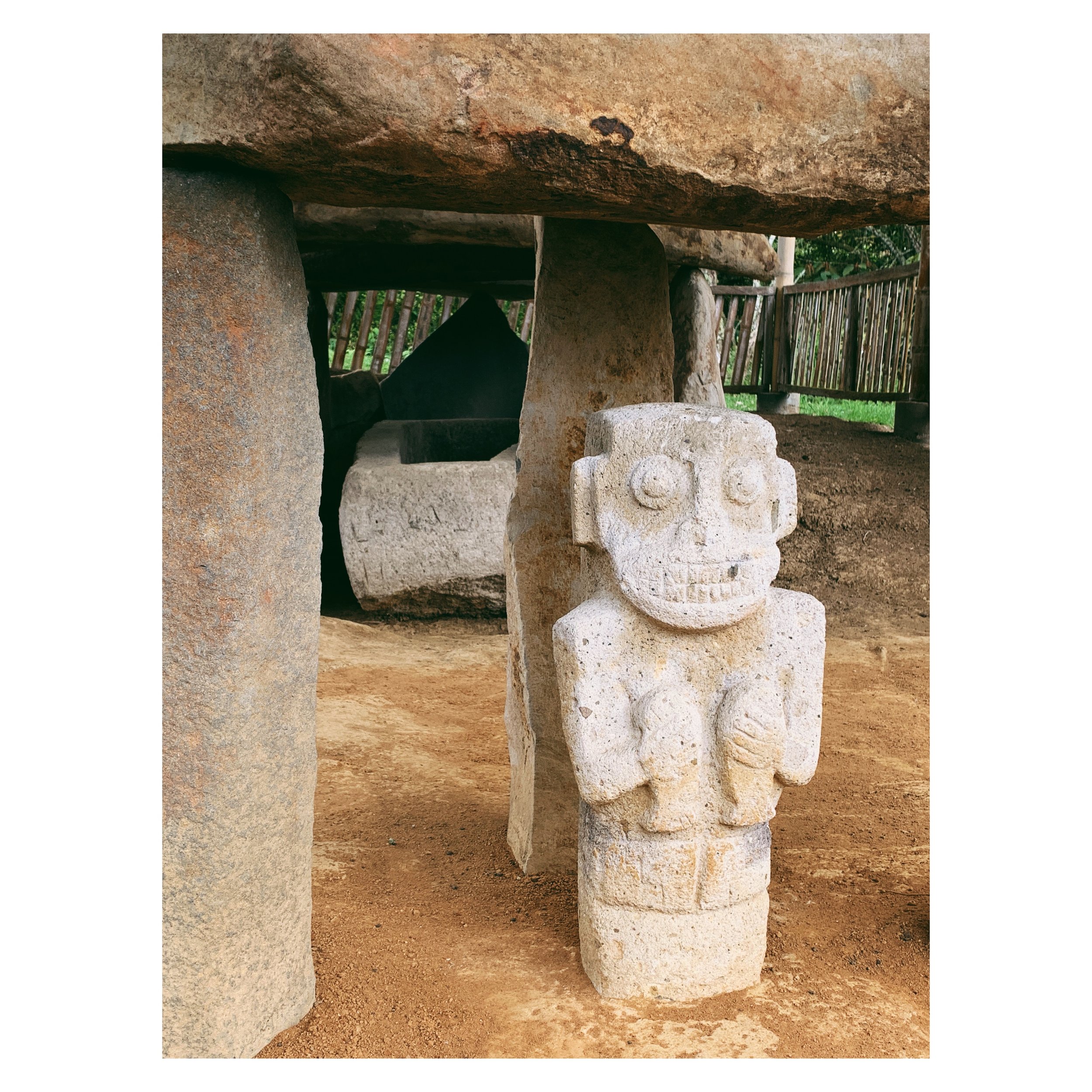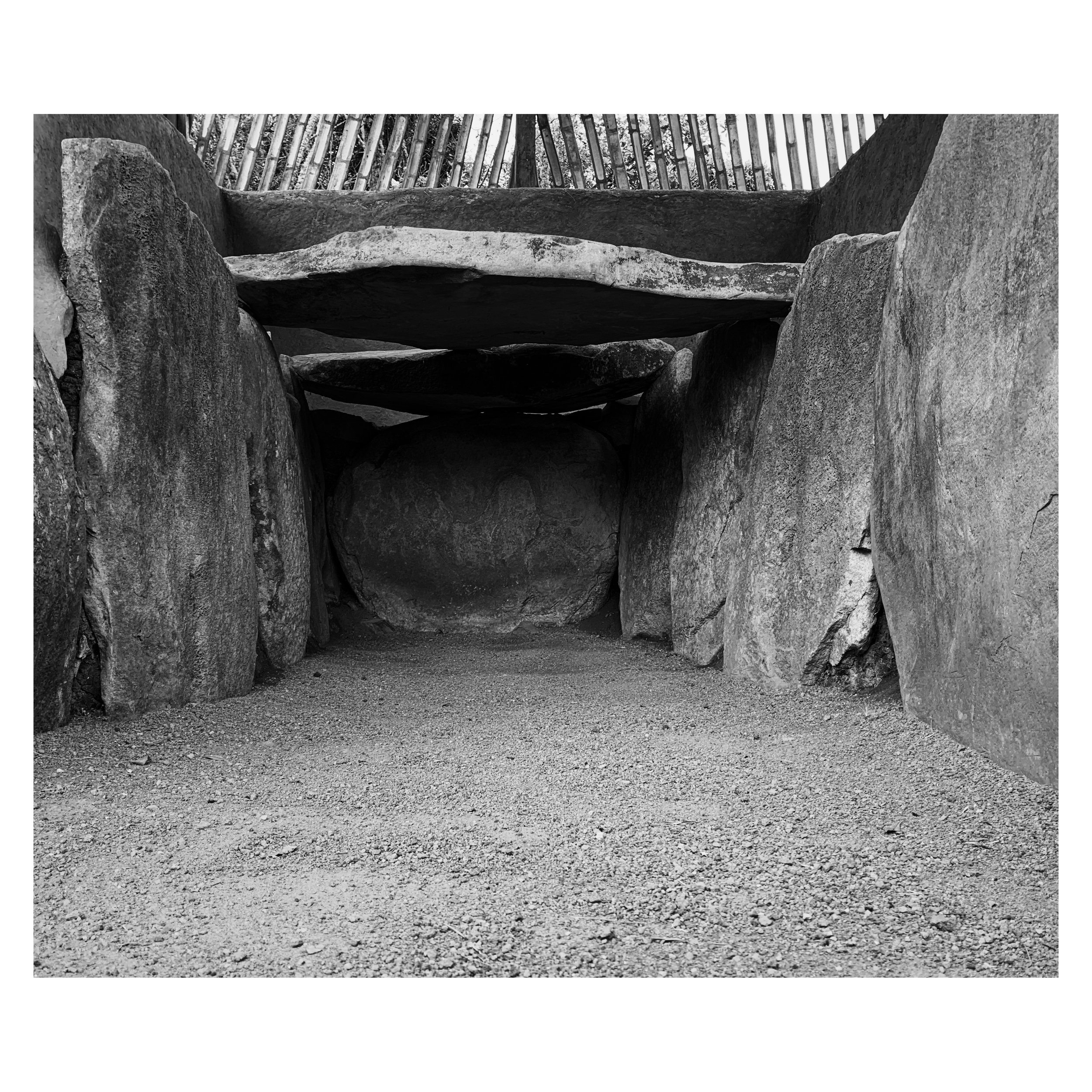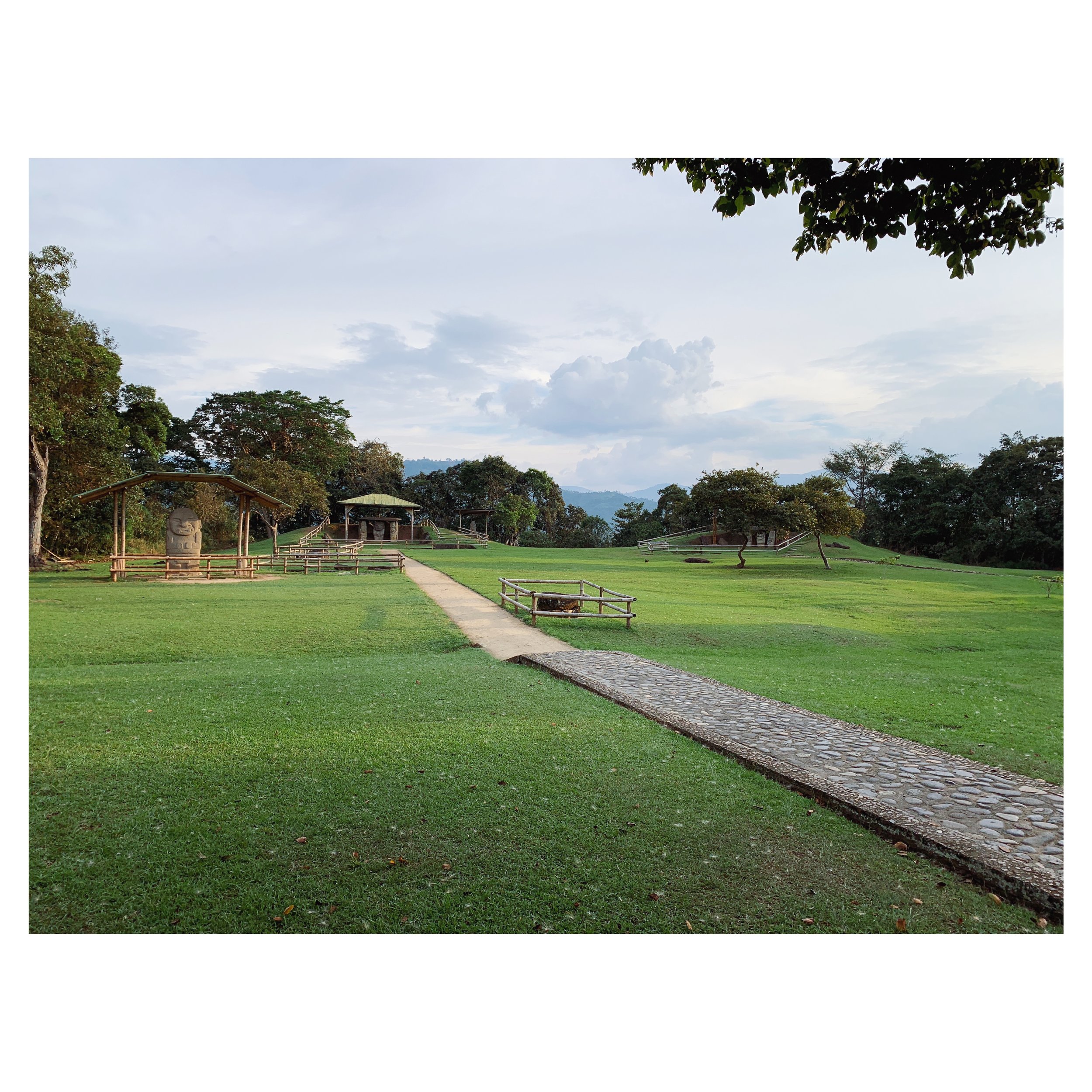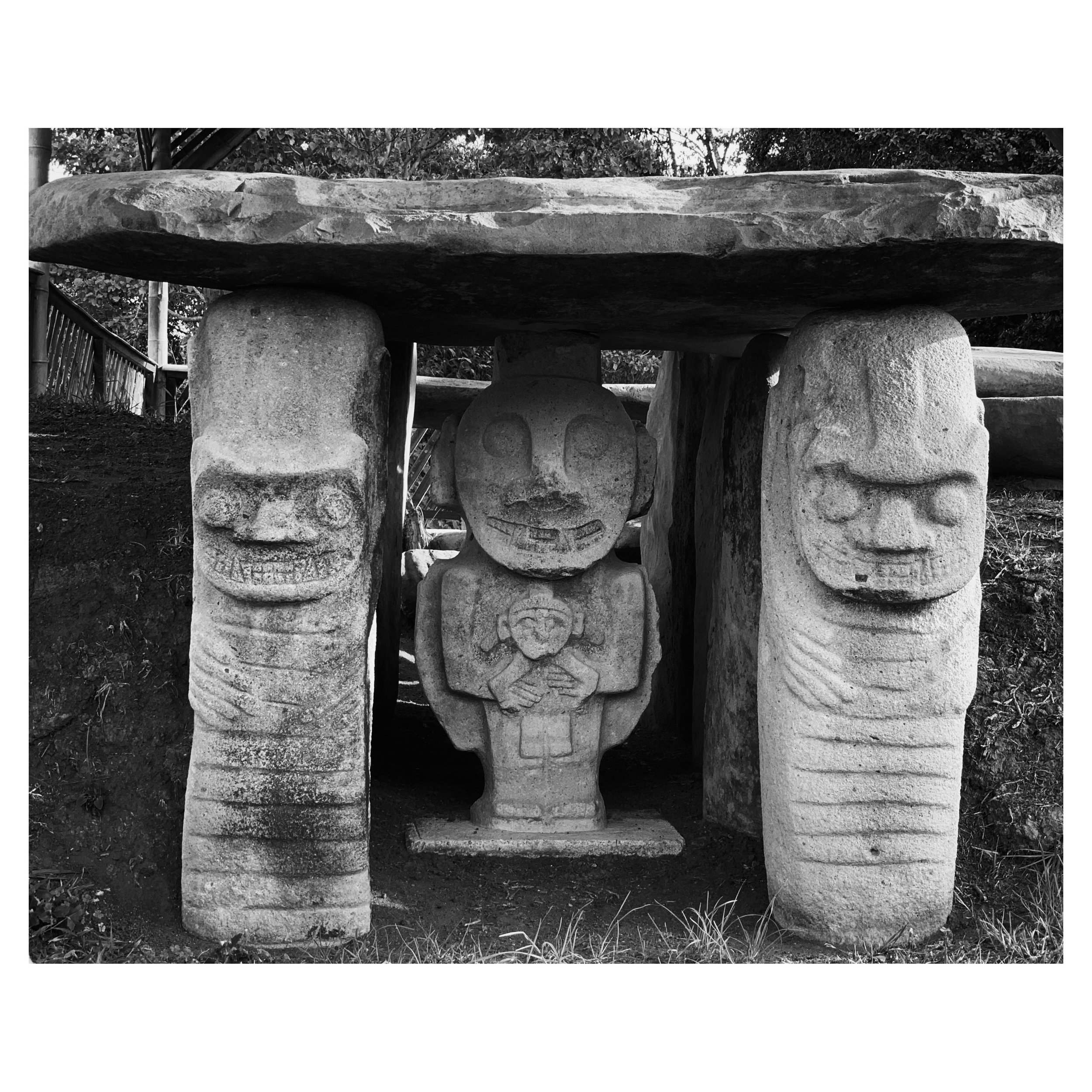The Secret History of San Agustín
Based on notes from my Journal, from our horseback guide through the park, and Information from the San Agustin ArchaeoloGical museum.
Nestled in the shadow of Colombia’s Andes mountains and in the Magdalena and Cauca river valleys is Colombia’s oldest and biggest archaeological mystery. San Agustín Archaeological Park is one of the three major archaeological zones in Colombia, along with The Lost City and The Tombs of Tierradentro, though it is the oldest and arguably most significant in the country in terms of unearthing the history of pre-Columbian South American societies. In fact, it’s the largest complex of funerary related burial mounds, tombs, sarcophagi, terraces, and megalithic volcanic stone statuary in all of South America. In the Archaeological Park rest over 500 volcanic stone carved statues (anthropomorphic, zoomorphic) and tombs attributed to a society archaeologists and historians know little about it.
Who were these people? Did they even have a name? How many were there? What purposes did these statues serve, and why?
What I can say, as a humble traveler in this foreign land riddled in a secret history is that the artistic prowess of this northern Andean society is remarkable, and only outdone by their imagination. The notion of duality—man & woman, sun & moon, life & death, mountain & valley—is evident all around. Statues feature supernatural gods and humans, humans and animals, shamans in trance or ceremonial action, and often times mixes of god, human, and animal—most prominently the jaguar, crocodile, and monkey. This society clearly saw death and not the end of being, but rather viewed life as one giant trip in which death was merely a step along the journey. These statues were guardians of their graves, and mythical guides serving the dead in the journey after life.
What archaeologists (read: experts, not tourists) now know is this nameless society lived in pre-Columbian Times from approximately 0-700 a.d. and disappeared long before the Spanish conquistadors arrived and subdued the indigenous populations. This northern Andean society lived in a wildly rugged and beautiful landscape, in between two of the most important rivers in Colombia against the green backdrop of the mountainous hillsides. The juxtaposition in altitudes between the valleys and mountains provided a more unforgiving environment for a society, and likely served as the center of a chiefdom with symbolic significance rather than an economic center. Tombs were likely constructed for comunal figures of significance (ex. shamans) and elite status (societal leaders/mammols); and many statues, such as La Chaquira, point to the fact that large scale religious gatherings worshipping Pachamama, sun and moon gods, and other deities representative of the Earth, took place in this region.
San Agustín Archaeological Park predates Machu Picchu by centuries. It doesn’t require a strenuous trek to get there like The Lost City. It’s cheaper to see than Easter Island (whose inhabitants argue belongs to Polynesian history, not Latin American). And it’s got all the rugged charm of a mountainside town steeped in mystery. What I’m saying is it’s well worth a visit and should be towards the top of an adventure checklist in Colombia.

